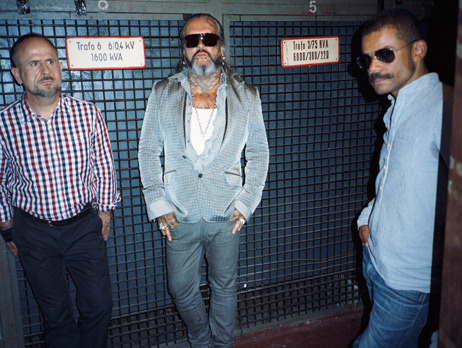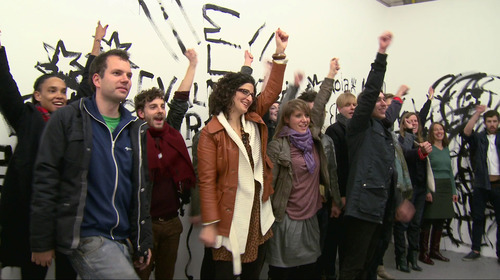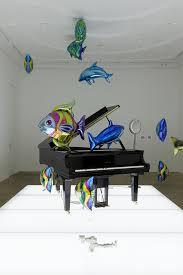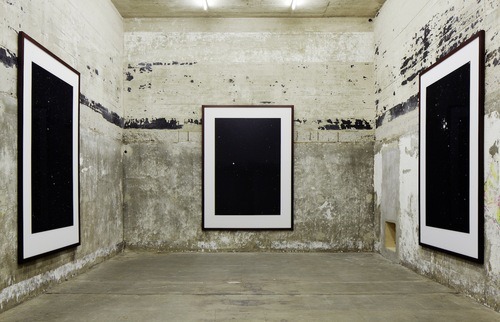Contemporary Art and Psychoactives in Berlin

I was in Berlin a couple weeks ago – if I were to sum up the city in a couple words it would be grungy yet culturally rich. I spent 17 hours in the basement of a swimming pool complex dancing with dirty looking club-kids, caught up with old friends, and saw Mocking Jay at Potsdamer Platz (yes, when there are kick-ass female characters I like big budget blockbusters). With the city’s vibrant club culture focused on electronic music and rampant use of psychoactive substances I realized that art is my drug of choice. So, bear with me, my art intake was high.
ART HIGHLIGHTS

Christian Falsnaes, Elixir, Still
Vertigo of Reality at Akademie der Kunst
This might be the best exhibition I have ever seen. And, no I was not on MDMA. (I visited the Van Gogh museum on shrooms and would not recommend it to anyone who has a real interest in art. Attending the opening of Carsten Höller’s Soma at Hamburger Bahnhof on Ketamin was more successful.(There is an interview on Youtube). Back to the topic.
The exhibition explores the construction and deconstruction of reality in contemporary art. Many pieces highlighting participation and interactivity beginning with closed circuit pieces form the 1960s and onwards. Notably Alex Hay’s seminal Grass Field(1966) first performed at the Armory in New York. The results of a performance by Valie Export at Kölnischer Kunstverein Raumsehen und Raumhören(1974). And, Dan Graham’s Present Continuous Past(s) (1974). A mirrored room with a screen projecting an image of the viewer with a few seconds time delay. The exhibitions focus on performance art, early and more recent, opens for canonical thinking about the medium.
The link between performance art and art that engages the body of the visitor interactively is acute. Christian Falsnaes claims that “art has a transformative potential.” Video documentation from his performance art work Elixir(2011) is on view. In the video the audience is prompted by the artist to paint and then break through the walls of a gallery, march outside the space, and paint on a public wall under the assumed group identity of “Elixir.” Another mode of heavily artist controlled audience participation that also reflects exploration of social rituals and group dynamics with utopian undertones is found in Justified Beliefs(2014). Five headphones transmit different audios directing the listener to actively becomes an essential part of the work by following instructions like smiling, getting undressed, and dancing. Hence the gallery space itself contains multiple realities.
Not only did the exhibition explore the physical realm but also the virtual. Lynn Hershmann Leeson’s seminal piece Agent Ruby(1999–2002) was on view. The piece allows the viewer to engage in a chat session with ‘Ruby’ an SRA (Self Replicating Automaton) that starred in the artists film Teknolust from 2002. I spent a long time chatting with Ruby about an array of different topics. “What kind of music do you like?” she asked me. Although intelligent she has shortcomings. To answer a question she could not answer her response would be “my brain contains more than 22,000 patterns, but not one that matches your last input.” Hence, a simpler version of Scarlett Johansson in the film Her. Harun Farocki ‘s virtual simulations of war acted as a more recent counterpart pressing the topic of games.
Other artists featured where Marina Abramovic, Bill Viola, Ulrike Rosebach, and Berlin based artist Olafur Eliasson.

Phillippe Parreno x2
The Algerian Paris based artist Phillippe Parreno, was on view in two locations; Esther Schipper, whose gallery has been a staple in the art-scene for a decade and the Schinkel Pavillion.
As I walked through the gallery space at Esther Schipper exploring an array of work including a technically advanced sound and light installation including a pianola, floating propane filled fish balloons, and a pile of fake snow in one corner. Parreno calls these pieces “quasi-objects,” objects whose existence are inseparable from the relationship to the context in which they are exhibited. His concepts are largely based within the teachings of Bruno Latour and Michael Serres. Parreno has since 1992 experimented with this mode of work, creating new situations by merging random objects. Putting French philosophy aside the exhibition as a whole was crazier than a visit to Berghain.
“How Can We Tell the Dancers From the Dance” at Schinkel Pavillion was less random. The piece consisted of a circular dance-floor with a wall piece seamlessly rotating around it. The piece looked made to fit the rounded walls of the pavilion. The automated installation is accompanied by a sound loop echoing the footsteps of dancers from a piece choreographed by the late Merce Cunningham and performed by dancers of the Merce Cunningham Dance Company.Thus a question is posed: Is it a work of dance if dancers are not present? As guidance to approach the work a catalog published by long-time collaborator Tom Eccles at Bard CCS lay on the reception desk. It was great to see both pieces in city as they showcase Parreno’s width as an artist.

Thomas Ruff at the Boros Collection
The Boros Collection
A converted Nazi air-raid bunker built in 1942 is the home of The Boros Collection. Built in 1942 during WW2 the bunker had the capacity to house thousands of people. Later, abandoned, it became the venue of an underground sex and techno club. The collection consists of post-1990 work collected by Christian Boros, an ad agency founder and publishing magnate, and his wife Karen. Karen is a former gallery director. The couple met when she came to help him install an art work – is this ever Gallerista’s dream? Jens Casper and Petra Petersson re-designed the space to house the collection. And, the Boros live in a penthouse above. In my opinion both the venue and its myth-building story are tacky, but after all, what else could be expected? Boros does stem from an advertising background.
The current showcase opened earlier this year. It is their second hanging. Notably Wolfgang Tillmans, Marieta Chirulescu, Dahn Vo, Ai Wei Wei, Tomas Saraceno, Klara Lidén, and more. To visit the collection you must schedule a tour. The 90 minute guided visit was excruciating as the space has lacks windows. The art however is worth it. The selection is safe but good.
TCHUSSIE
What's Your Reaction?
Anna Mikaela Ekstrand is editor-in-chief and founder of Cultbytes. She mediates art through writing, curating, and lecturing. Her latest books are Assuming Asymmetries: Conversations on Curating Public Art Projects of the 1980s and 1990s and Curating Beyond the Mainstream. Send your inquiries, tips, and pitches to info@cultbytes.com.

